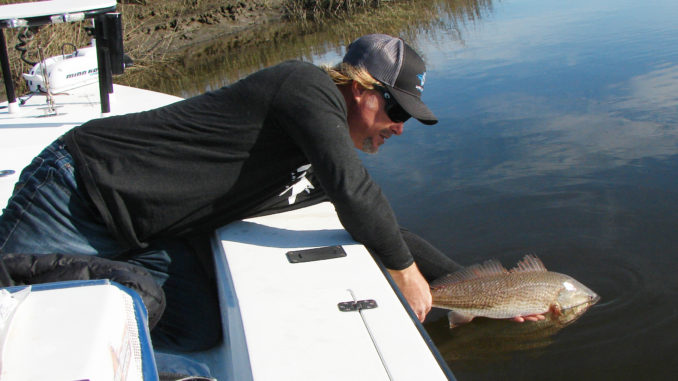
The Northeast Cape Fear joins the Cape Fear River beside the Battleship North Carolina near downtown Wilmington, and the Black River flows into it about 10 miles upstream. The rivers combine to drain much of central North Carolina. There is also the Brunswick River, but it is basically a thoroughfare that branches off the Cape Fear just upriver from Wilmington and rejoins it across from the N.C. State Ports facility.
At times — after a hurricane, for instance — there is an overabundance of freshwater flowing down these rivers. But during times of drought and near-drought conditions, the flow slows dramatically. While the legal boundaries for coastal and inland waters don’t change, the salinity level in the rivers fluctuates, and fish move up and down the rivers with it.
The rivers are tidal to well upstream of Wilmington, and tidal movements affect the salinity, too, as well as affecting the feeding habits of fish as currents move bait around and the tidal stage controls access to many areas.
Saltwater fish, like drum and trout, move upriver when flow is low and the saltwater edge creeps upriver. They are often caught in the Brunswick River, and they sometimes move up the Cape Fear River beyond the Sutton Power Plant and up the Northeast Cape Fear River to beyond the I-140 bridge. When there is significant rainfall to push the saltwater edge down the river, it also pushes the saltwater fish downriver, and freshwater fish often follow them. Several times in 2018, a wet year, freshwater catfish have been caught below Snows Cut.
Stripers move freely through the rivers, regardless of the salinity. The population was once thought to be totally migratory, but many were found in the rivers after fish kills attributed to low oxygen resulting from Hurricane Florence. These kills were primarily from Wilmington upriver, but stripers and and other fish were found floating well downriver. One small striper was caught in a creek near Southport,and a larger one was discovered floating in the old Southport Yacht Basin.
Fish follow bait, and the saltwater edge concentrates bait. Many small fish can tolerate both freshwater and saltwater, but they tend to congregate where the waters blend. Speckled trout, striped bass, red drum and other species also concentrate in the blending waters to take advantage of the abundant baitfish.




